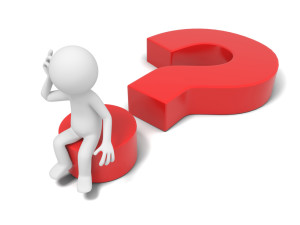Welcome to the Clarity Quiz!
Under what conditions does email make sense over a phone call or face-to-face conversation?
- When you have a straight forward question that requires an answer
- When you have a straight forward answer to a question asked of you
- When you want to confirm, document, or disseminate a decision, plan, or assignment
- When you are confident one email exchange will resolve your issue
- All of the above and only the above
- Under many, many more circumstances
Make your selection and then read on to see if you are correct.

If you chose #5, congratulations. If you chose numbers 1 – 4, you are on the right track. If you chose #6, please remove me from your address book!
We all get too much email. And too often, one email begets another, which begets another, which begets another, which … The pain multiplys.
Why? Because 99% of email messages should never be sent. Email is so easy that we send and reply without stopping to consider the alternatives or the consequences. And it is so easy we don’t realize how much damage we do by falling for “it’s so easy.” We forget about the time we waste typing, reviewing, and revising. We forget about the time others spend replying, reviewing, and revising. We forget about the potential for philosophizing, misleading, undermining, irritating, and delaying, all multiplied by each email round trip on an resolved issue.
Despite how easy email is, it turns out there are very few situations when it is the best method of communication.
IF you have a simple question, a simple answer, or a decision, plan, assignment to confirm, document, or disseminate,
AND IF you believe a single one-way or round trip email exchange will do the trick,
THEN email makes sense.
That’s it! Those are the only situations where email is truly effective.
In every other situation, you are better off picking up the phone or making the effort to have a face-to-face conversation.
Here is why. Picture pretty much any other situation. If you aren’t asking a straight forward question, providing a straight forward answer, or announcing a decision, plan, or assignment, you are into something that isn’t straight forward. You probably aren’t even sure where or how to start the email. You have to guess. Your very first statement may be understood, misinterpretted, or rejected. Since you don’t know which, your second sentence is also a guess. You go on guessing. Most likely you revise and guess every inch of the way. This is like trying to explain the route to a destination without knowing either the destination or the starting point. And after you finally send the email, you trigger a chain of additional guessing by every recipient for the same reason – more guessing.
And guessing is so inefficient! If you got on the phone or talked face-to-face, you wouldn’t have to guess. You could get immediate feedback, verbal or visual, and avoid all that guessing along with its potentially damaging consequences. You could adjust your second sentence depending on how the other person responds to the first. And you could adjust your third, fourth, fifth, etc. The minute you start guessing as you write an email, you are better off on the phone or face-to-face.
What about the time zone and schedule challenges of phone calls and meetings? In our busy and global economy, this is a totally legitimate concern. Nonetheless, guessing is expensive in both time and misunderstandings. If you can’t possibly coordinate schedules, you need to communicate in a step-wise fashion. There is no point launching into a long persuasive argument defending a preferred product launch approach without first confirming that the product, or any new product, should be launched!
The next time you start writing an email, ask yourself if you’ve begun guessing what to say next or how the recipient might react. If you have, get on the phone or in front of your audience!


Comments are closed.